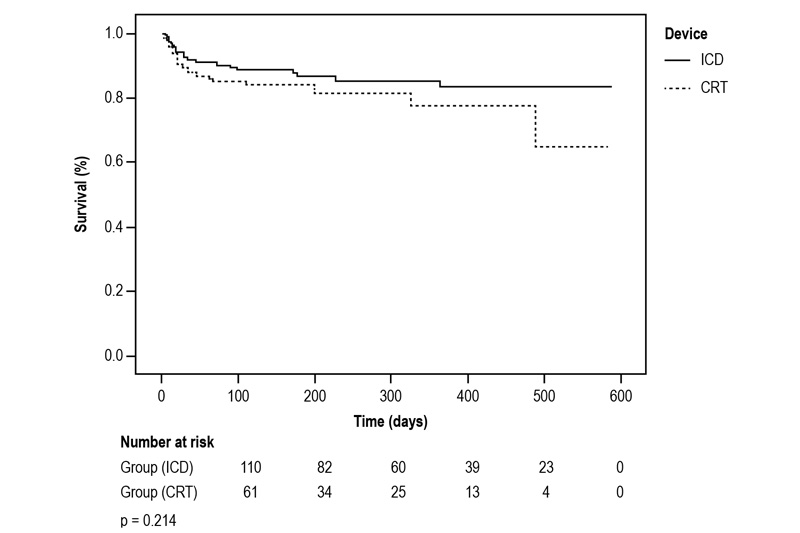Volume 112, Nº 5, May 2019
DOI: http://www.dx.doi.org/10.5935/abc.20190018
ORIGINAL ARTICLE
Unscheduled Emergency Visits after Cardiac Devices Implantation: Comparison between Cardioverter Defibrillators and Cardiac Resynchronization Therapy Devices in less than one year of Follow Up
Stefan Warpechowski Neto
Laura Lessa Gaudie Ley
Eduardo Dytz Almeida
Marco Aurélio Lumertz Saffi
Luiza Zwan Dutra
Antonio Lessa Gaudie Ley
Roberto Tofani Sant`Anna
Gustavo Glotz de Lima
Renato Abdala Karam Kalil
Tiago Luiz Luz Leiria

Abstract
Background: The use of Cardiovascular Implantable Electronic Devices (CIED), such as the Implantable Cardioverter Defibrillator (ICD) and Cardiac Resynchronization Therapy (CRT), is increasing. The number of leads may vary according to the device. Lead placement in the left ventricle increases surgical time and may be associated with greater morbidity after hospital discharge, an event that is often confused with the underlying disease severity.
Objective: To evaluate the rate of unscheduled emergency hospitalizations and death after implantable device surgery stratified by the type of device.
Methods: Prospective cohort study of 199 patients submitted to cardiac device implantation. The groups were stratified according to the type of device: ICD group (n = 124) and CRT group (n = 75). Probability estimates were analyzed by the Kaplan-Meier method according to the outcome. A value of p < 0.05 was considered significant in the statistical analyses.
Results: Most of the sample comprised male patients (71.9%), with a mean age of 61.1 ± 14.2. Left ventricular ejection fraction was similar between the groups (CRT 37.4 ± 18.1 vs. ICD 39.1 ± 17.0, p = 0.532). The rate of unscheduled visits to the emergency unit related to the device was 4.8% in the ICD group and 10.6% in the CRT group (p = 0.20). The probability of device-related survival of the variable “death” was different between the groups (p = 0.008).
Conclusions: Patients after CRT implantation show a higher probability of mortality after surgery at a follow-up of less than 1 year. The rate of unscheduled hospital visits, related or not to the implant, does not differ between the groups. (Arq Bras Cardiol. 2018; [online].ahead print, PP.0-0)
Keywords: Defibrillators, Implantable; Cardiac-Gated Imaging Techniques; Cardiac Resynchronization Therapy Devices; Patient Readmission; Mortality.















